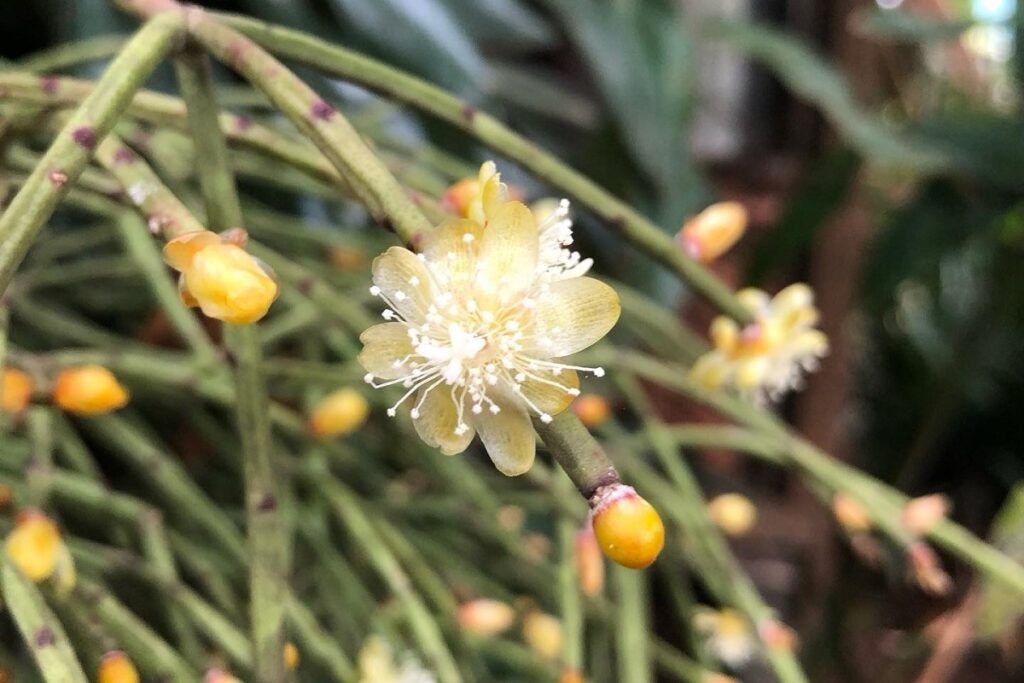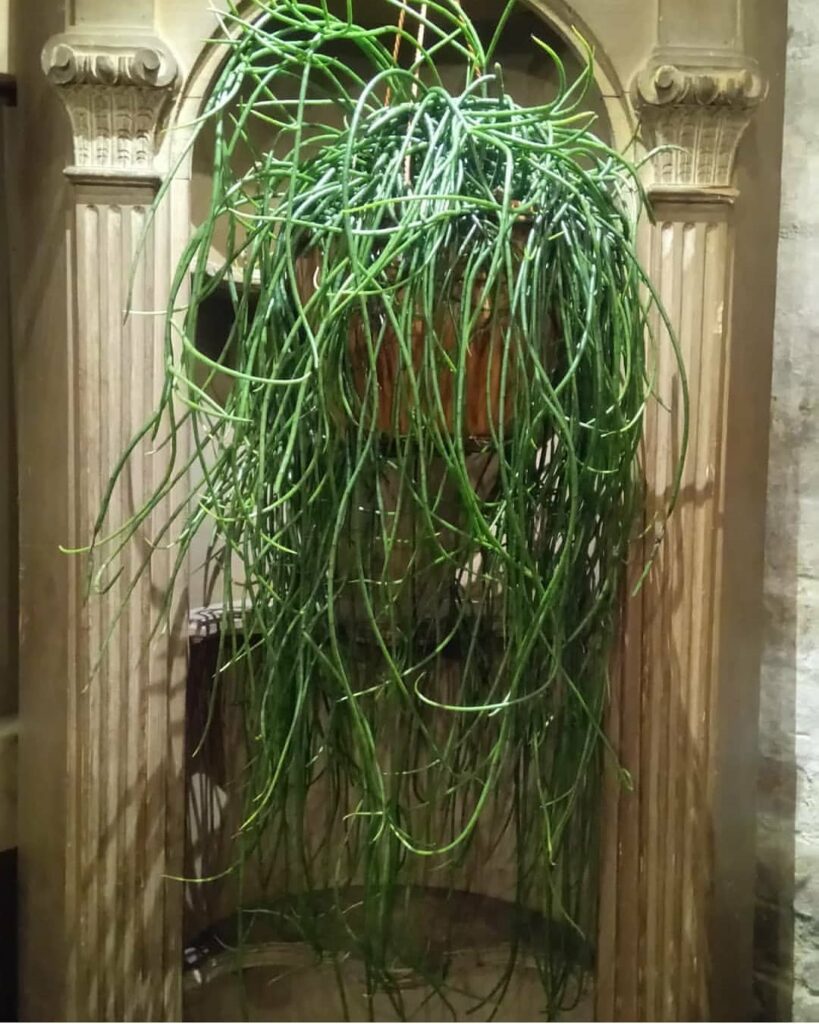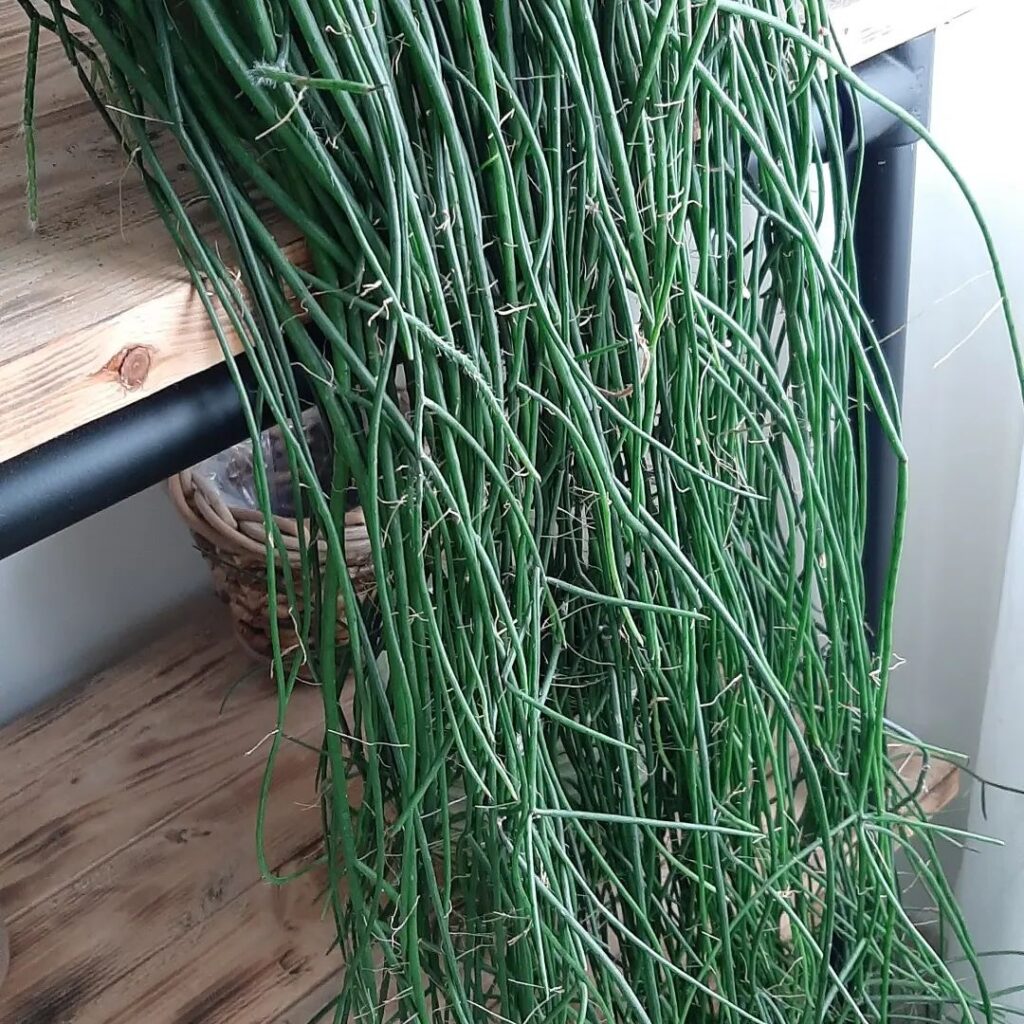Rhipsalis floccosa: The Pendulous Cactus with a Delicate Beauty
Have you ever come across a cactus that looks like it’s straight out of a fairytale? Well, get ready to be enchanted by the Rhipsalis floccosa, a pendulous cactus that’s sure to steal your heart with its delicate beauty!
Imagine thin, leafless stems adorned with creamy white or pale pink flowers in early summer, followed by pinkish-white fruits. It’s like nature’s own hanging garden, and it’s about to become your new plant obsession.
But wait, there’s more! This cactus is a real showstopper, growing up to an impressive 3 feet in length and 2 feet in spread. It starts off erect but eventually becomes pendent, creating a cascading effect that’s both graceful and mesmerizing.

Contents
About Rhipsalis floccosa
Rhipsalis floccosa is an epiphytic or lithophytic perennial cactus, which means it can grow on other plants or rocks. It has a unique growth pattern called “determinate branching,” where new growth happens near the top, giving it an upward-growing shape while the lower branches naturally prune themselves.
This cactus comes in different varieties, each with its own unique charm. Some have green stems, while others are tinged with red or purple. The flowers can range from greenish-white to creamy white or even golden yellow, depending on the variety.
How To Care For Rhipsalis floccosa
Now that you’re smitten with this beautiful cactus, let’s talk about how to keep it happy and thriving:
Light
These cacti love bright, indirect light, so a spot near a sunny window is perfect. But be warned – direct afternoon sun is a no-no! You can also use a grow light to supplement the natural light if needed.

Water
Like a true diva, Rhipsalis floccosa requires careful watering. Keep the soil slightly moist during the growing season (spring and summer), but don’t let it get soggy. In winter, water sparingly, just enough to prevent the soil from drying out completely. Use filtered or rainwater to avoid mineral buildup.
Soil
These cacti prefer a well-draining soil mix specially formulated for cacti and succulents. You can buy a pre-made mix or create your own by combining potting soil, perlite, and coarse sand.
Fertilizer
Feed your Rhipsalis floccosa with a balanced, water-soluble fertilizer every two weeks during the growing season. Stop fertilizing in winter when growth slows down.
Temperature and Humidity
Rhipsalis floccosa thrives in average household temperatures (65-75°F) and likes a bit of humidity, so consider using a pebble tray or a humidifier.
Pests and Problems
Keep an eye out for mealybugs, which can be a nuisance. If you spot any, isolate the plant and treat it with an insecticidal soap or neem oil.

Pruning
You don’t need to prune this cactus regularly, but you can trim off any damaged or overly long stems to maintain its shape.
Potting and Repotting
Rhipsalis floccosa has small, delicate roots, so be gentle when repotting. Use a well-draining cactus mix and a pot with drainage holes. Repot every two to three years in spring.
Propagation
The Rhipsalis floccosa is an easy-going cactus that can be propagated from cuttings with minimal effort. It’s the perfect way to share this delightful plant with your friends and family or to grow your own mini Rhipsalis garden!
To propagate from cuttings:
- In spring or summer, carefully snip off 3-6 inch long healthy stem segments
- Allow the cut ends to dry out for 2-3 days so they can form a callus
- Fill a well-draining pot or tray with a cactus/succulent potting mix
- Stick the calloused cuttings vertically into the soil, burying about 1 inch deep
- Water sparingly, just enough to lightly moisten the soil
- Place in a bright spot out of direct sunlight
- To boost humidity, you can cover the pot with a clear plastic bag or cloche
- After 2-4 weeks, you should see new growth appearing – that means roots have formed!
- Once rooted, treat the new plants just like mature Rhipsalis, following regular care
Propagating this trailing beauty is that simple! In no time, you’ll have a hanging basket or shelf overflowing with the delicate tendrils of your very own Rhipsalis floccosa cacti gems.
